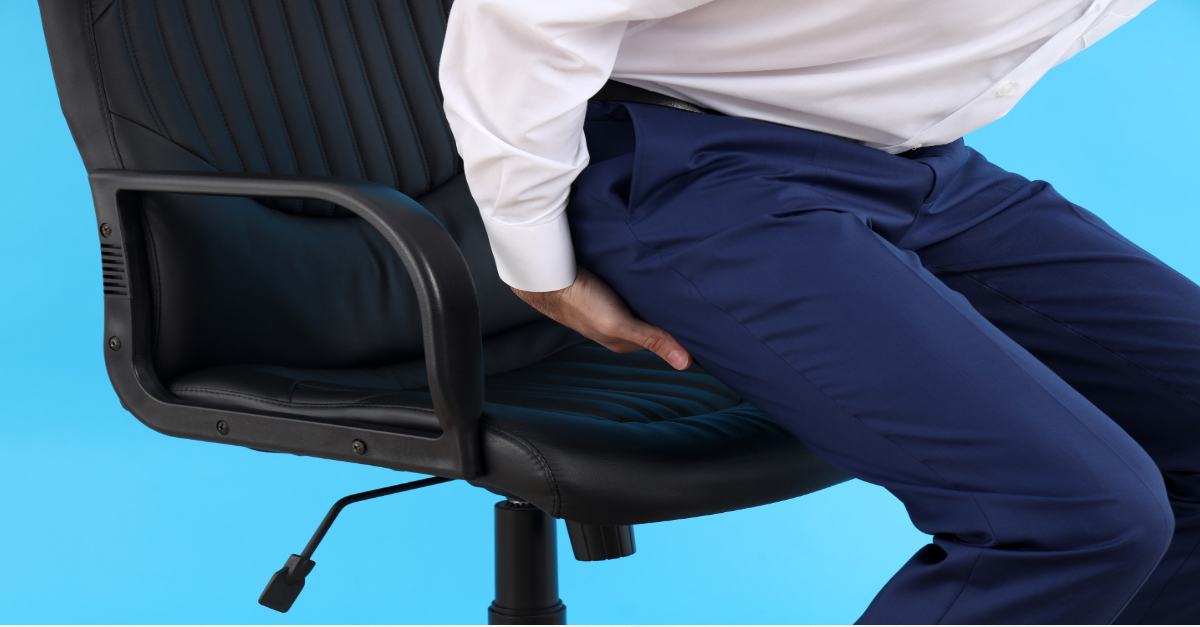Office chair butt refers to the discomfort, numbness, or pain experienced in the buttocks and lower back by individuals who spend long hours sitting in office chairs. This condition is often a result of prolonged sitting with poor posture, lack of movement, or the use of unsupportive chairs. These factors can lead to muscle fatigue, reduced blood flow, and increased pressure on the lower body.
Common Causes of Office Chair Butt
Several factors contribute to the development of office chair, including:

Prolonged Sitting: Extended periods without breaks or movement can cause muscle fatigue and reduced blood flow.
Poor Posture: Slouching or improper sitting positions increase pressure on the lower back and buttocks, exacerbating discomfort.
Unsupportive Chairs: Using chairs without proper support or cushioning can lead to numbness and pain.
Hard Surfaces: Sitting on hard surfaces or chairs without adequate padding creates pressure points and discomfort.
Poor Ergonomics: Improper workspace setup, such as incorrect chair height or distance from the desk, cancontribute to discomfort.
Symptoms of Office Chair Butt
The symptoms of office chair butt can vary but commonly include:
Discomfort of Pain: Persistent discomfort, numbness, or pain in the buttocks and lower back, especially with prolonged sitting.
Pressure or Heaviness: A feeling of pressure of heaviness in the buttocks, sometimes accompained by tinglinf sesations.
Stiffness: Reduced mobility in the hips, making it difficult to stand up or move comfortably.
Soreness: Tenderness in the buttocks and lower back muscles, which can become more pronounced over time.
Posture Issues: Difficulty maintaining proper posture as discomfort and numbness worsen.
Circulation Problems: Reduced circulation in the legs can lead to feelings of coldness or “pins and needles.”

Solutions and Remedies
To prevent or alleviate office chair butt, consider implementing these solutions:
Regular Breaks: Incorporate standing, stretching, or short walks into your work routine to keep muscles active and improve circulation.
Proper Posture: Ensure good posture by keeping your feet flat on the floor, back straight, and thighs parallel to the ground.
Ergonomic Chairs: Invest in an ergonomic office chair with adjustable features for optional comfort and support.
Cushions: Use a cushion or seat pad to support and reduce pressure on the buttocks.
Workstation Setup: Adjust your workstation to ensure proper ergonomics, including the height of your chair and distance from your desk.
Standing Desk: Consider using a standing desk for part of the day to reduce prolonged sitting.
Strengthening Exercises: Practice exercises that strengthen the core and lower back muscles to reduce the risk of discomfort.
Prevention Tips

Here’s a concise list of tips to prevent office chair butt:
Take regular breaks to stand, stretch, and walk around.
Maintain good posture while sitting, with feet flat on the floor and back supported.
Invest in an ergonomic office chair with adjustable features.
Use a cushion or seat pad for additional support.
Adjust your workstation to ensure proper ergonomics.
Consider using a standing desk for part of the day.
Practice exercises that strengthen the core and lower back.
By understanding the causes and symptoms of office chair butt and implementing these solutions and prevention tips, you can improve your comfort and productivity while working.











